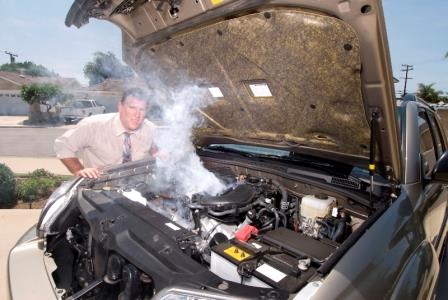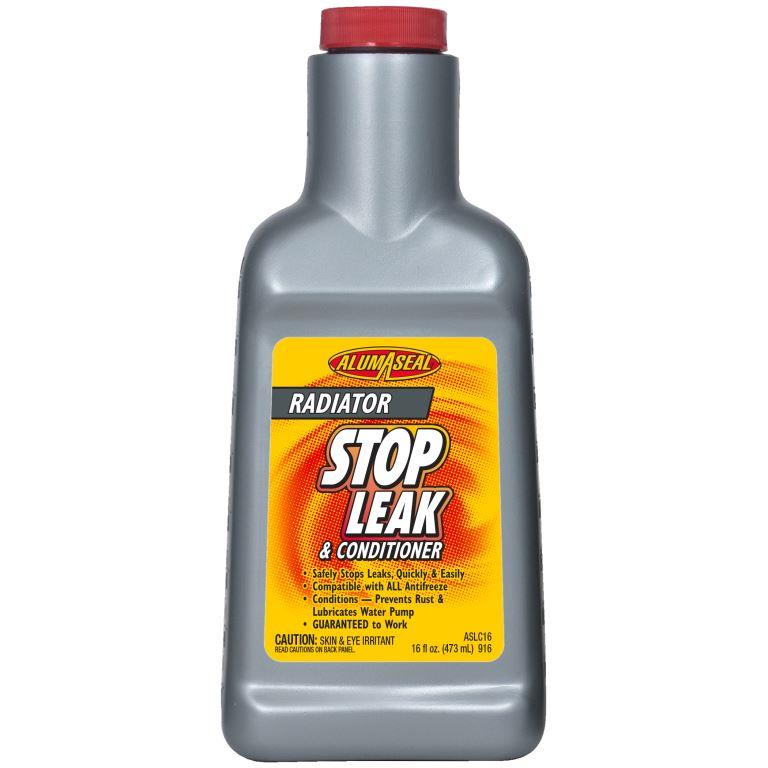How To Fix Radiator Leaks With AlumAseal
 Your radiator is an essential component of your vehicle’s operating system. Without it, your engine would soon overheat and could easily be ruined. Regularly checking the radiator and filling up the overflow tank with coolant is a must if you want to drive safely and protect the investment you have made in your car.Opens a new window
Your radiator is an essential component of your vehicle’s operating system. Without it, your engine would soon overheat and could easily be ruined. Regularly checking the radiator and filling up the overflow tank with coolant is a must if you want to drive safely and protect the investment you have made in your car.Opens a new window
As a car gets older and its components age you may start to notice your coolant reservoir getting low or your low coolant light on the dash coming on. It’s simple to add a little more coolant and go on your way, but where is that coolant going to? A little detective work may be in order.
Identifying the Radiator Leak
Make sure the coolant is full, then get the car up to temperature and park it on a flat dry surface and look for any drips. Seeing where the coolant is approximately coming from will help narrow down your search. From there look at the engine hoses, heater hoses, and all the hoses that connect to the radiator. You are looking to see if those hoses or their clamps have come loose and are draining your radiator dry. If so, simply tighten things up. You also need to look at the actual hoses. As hoses age and go through heat cycles they will begin to crack or expand due to age and wear.Opens a new window Check all your coolant hoses to make sure they are not damp with coolant and are not bulging or overly soft. If you do find some failed hoses replace them immediately.
Now look at your actual radiator, your radiator is an orderly web of cooling tubes and fins that keep your coolant from getting too hot. Those tubes all connect to small tanks on the tops and bottom or on the sides of the radiator. There are lots of seams that could spring a leak or one of the tubes could have become punctured from some road debris. Carefully review your radiator and look for wet spots or corrosion. If you see any signs of a slight leak this can easily be fixed with AlumAsealOpens a new window.
Radiator Leak Repair
NOTE: These instructions and this product are for fixing small leaks.
 1. After the engine has fully cooled down, remove the radiator cap (Some new cars have remote reservoirs for coolant, in these cases, you will need to remove the upper radiator hose and pour AlumAseal in the system that way).
1. After the engine has fully cooled down, remove the radiator cap (Some new cars have remote reservoirs for coolant, in these cases, you will need to remove the upper radiator hose and pour AlumAseal in the system that way).
2. With the radiator cap removed pour the contents of a bottle of AlumAseal Radiator Stop Leak and ConditionerOpens a new window or AlumAseal Radiator Stop Leak PowderOpens a new window into the radiator, then top off the coolant level.
3. Replace the cap, and then drive the vehicle around for 15 to 20 minutes (with the heater on hot) to circulate the coolant enough to seal the leakage points. It may take up to 200 miles of driving before things are fully sealed, but you will likely notice a difference within only a few minutes.
Now you know how to fix a radiator leak – it’s that simple with AlumAseal!
AlumAseal has a 75-year proven track record of fixing radiator leaks and saving car owners bundles of money. It is safe to use with every antifreeze and coolant type and with all the plastic and rubber parts of a radiator system.
If you are still losing coolant and do not see it leaking from anywhere it is time to consult a mechanic as soon as possible. You may be losing coolant within your engine and is either being burned during combustion or mixing with your oil, neither of which is good for the longevity of your engine.






My heater does not work in my van..so i cant turn heater on
My brother has been having trouble with his radiator. Thank you for this; we’ll keep in mind to check the radiator and look for wet spots or corrosion. You’re advised regarding the use of Alumseal seems effective, but I guess it’s better if I’ll just look for a radiator repair shop that can give my radiator a thorough check-up.